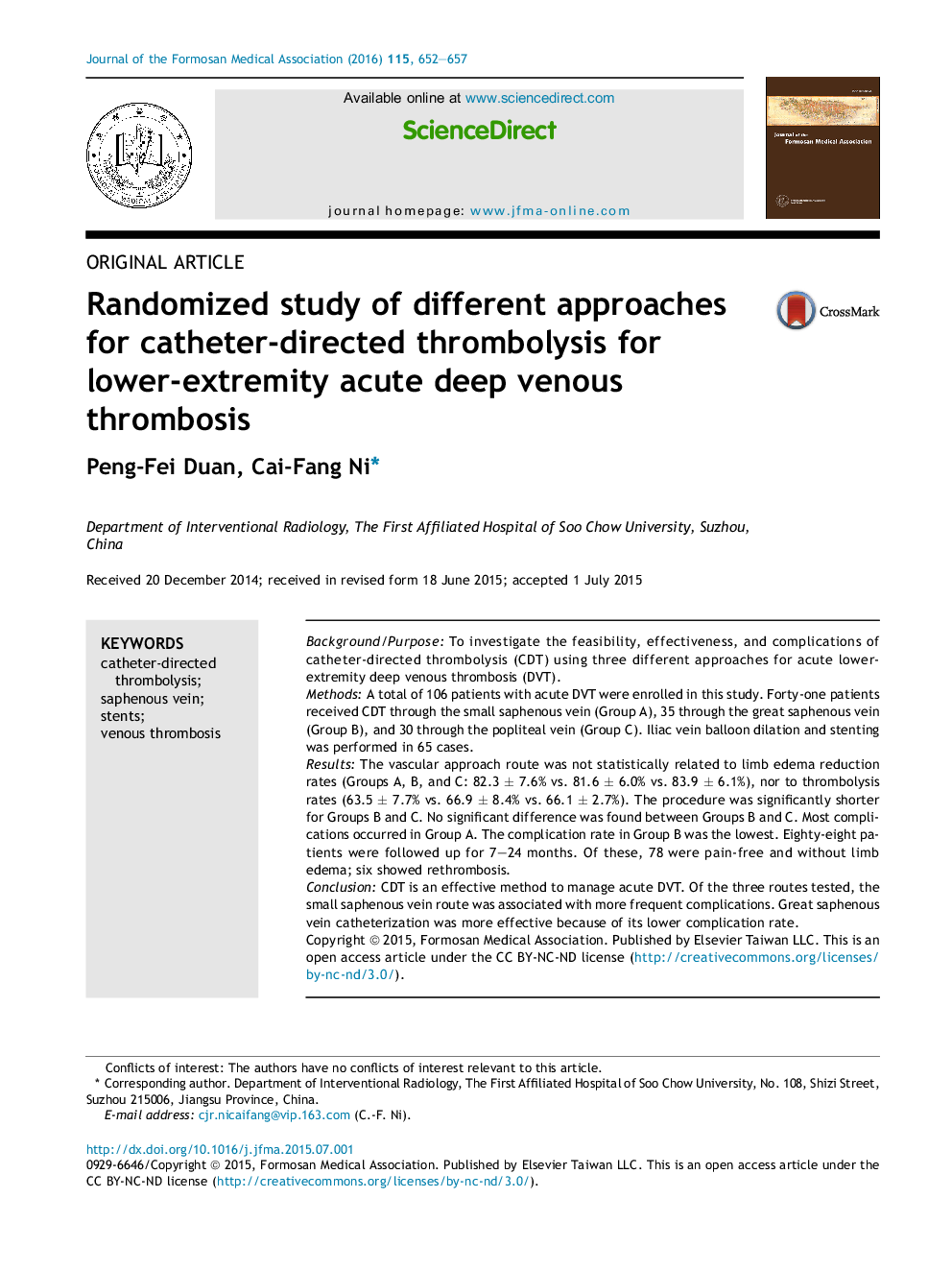| کد مقاله | کد نشریه | سال انتشار | مقاله انگلیسی | نسخه تمام متن |
|---|---|---|---|---|
| 3478199 | 1233389 | 2016 | 6 صفحه PDF | دانلود رایگان |
Background/PurposeTo investigate the feasibility, effectiveness, and complications of catheter-directed thrombolysis (CDT) using three different approaches for acute lower-extremity deep venous thrombosis (DVT).MethodsA total of 106 patients with acute DVT were enrolled in this study. Forty-one patients received CDT through the small saphenous vein (Group A), 35 through the great saphenous vein (Group B), and 30 through the popliteal vein (Group C). Iliac vein balloon dilation and stenting was performed in 65 cases.ResultsThe vascular approach route was not statistically related to limb edema reduction rates (Groups A, B, and C: 82.3 ± 7.6% vs. 81.6 ± 6.0% vs. 83.9 ± 6.1%), nor to thrombolysis rates (63.5 ± 7.7% vs. 66.9 ± 8.4% vs. 66.1 ± 2.7%). The procedure was significantly shorter for Groups B and C. No significant difference was found between Groups B and C. Most complications occurred in Group A. The complication rate in Group B was the lowest. Eighty-eight patients were followed up for 7–24 months. Of these, 78 were pain-free and without limb edema; six showed rethrombosis.ConclusionCDT is an effective method to manage acute DVT. Of the three routes tested, the small saphenous vein route was associated with more frequent complications. Great saphenous vein catheterization was more effective because of its lower complication rate.
Journal: Journal of the Formosan Medical Association - Volume 115, Issue 8, August 2016, Pages 652–657
